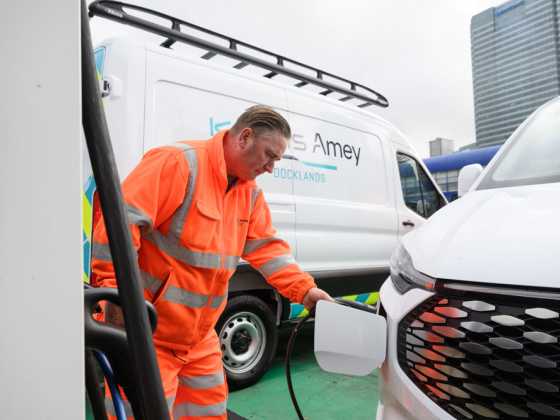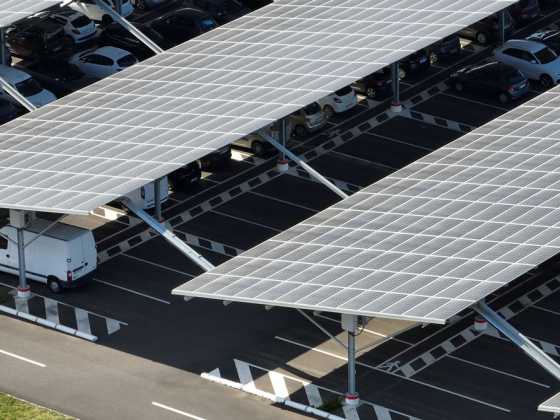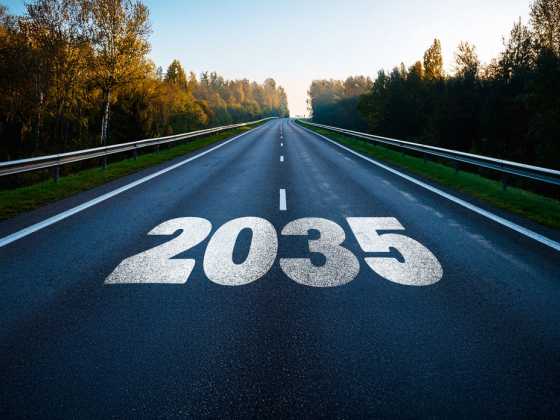What’s the route forward for electric vehicle deliveries?

With many fleet owners still struggling to navigate new challenges around electrification, Alex Buckley shares some tips to support the successful delivery of a decarbonisation strategy
When it comes to technologies that are still maturing, one of the most difficult roadblocks to achieving widespread adoption is education. When it comes to electric vehicles (EVs), this process of educating delivery organisations about how to best leverage them is still in its early stages. As a result, long-term thinking about this technology is still dominated by misconceptions and apprehension.
A particularly striking example of this was highlighted in a recent study that Shell and Deloitte published on decarbonisation efforts among fleet operators. One of the fleet owners polled stated: “We have only trialled a few EVs in a city centre, as that’s all they can do.” This was in the context of nearly one third of respondents underestimating the range.
It’s easy to imagine why a fleet owner would take that approach, after all, the government is increasingly incentivising EV usage in city centres. But in point of fact, EVs can provide value in a much larger set of use cases, especially as decarbonisation pushes among logistics businesses become more urgent. The trick is to find ways to overcome these four potential hurdles:
Planning around shorter ranges
Even though average EV ranges have improved significantly in the last 10 years, range was one of the factors in EV routing that seemed to worry a lot of respondents in Deloitte’s study, so much so that nearly a third of respondents actually underestimated the total range of a typical EV. There’s still a perception that EVs aren’t applicable to a wide range of logistics use cases, and that outside of dense city centres they’re simply not as useful.
There’s no doubt that these kinds of limitations on range that come with EVs can be a challenge, but it’s a challenge that can be tackled with the right approach to routing and distribution planning. By mapping out the areas where you expect the most demand to arise for a particular period, you can become more strategic about where you position hubs and warehouses in order to minimise the required amount of travel for any given route.
Smart, AI-powered routing techniques already have the power to shorten the distances you’re driving for each stop, so getting more strategic about where your EVs are actually starting those routes can only improve the length you’re able to get from them.
Managing charging stops
Of course, one of the other issues that businesses worry about isn’t just the length of a charge, but the logistics of charging itself. Installing charging hardware in distribution centres and warehouses can be a big project, and even once they’re installed, you’ll need a reliable map of other charging stations out in the world.
Route optimisation can present challenges even before you start thinking about incorporating stops along the route for the vehicle to potentially spend multiple hours charging. Equally, the same techniques that you need to ensure efficient routing under normal circumstances can still be applied here. You can factor in charging stops after a certain number of miles driven automatically, the way you might factor in necessary breaks at certain intervals along a route. Based on the charger, you can calculate charging time the same way you would calculate service time.
Of course, many businesses will default to doing only as many deliveries as a single charge will carry them. But for businesses that may sometimes need more than that, a sophisticated routing system should help.
Blending EVs into hybrid fleets
EV production is certainly starting to pick up steam. That said, supply chain issues mean that there still won’t be enough of them in the immediate future to enable everyone currently running a traditional fleet to fully transition over to electric. That means that one of the keys to success in the interim will be finding a way to manage a hybrid fleet and optimise delivery planning in such a way as to limit emissions.
We shouldn’t let the perfect be the enemy of the good when it comes to decarbonisation. At the same time, managing a hybrid fleet might seem a little tricky. After all, the more variables you add into the planning process, the harder it is to ensure that you’re getting the most efficient possible planning outcomes.
Here, AI may be the best solution. If you can leverage routing technology that enables you to configure different parameters for different truck types and then nearly-instantaneously find the optimal options based on what you’d like to optimise your routes for (e.g., the lowest CO2 emissions), handling this kind of hybrid fleet can become like second nature for routers and despatchers.
Tracking sustainability progress
Many of the challenges that we’ve talked about above are fundamental to new technologies like EVs. But perhaps the most important challenge to overcome is something much more fundamental: the ability to actually measure what’s happening when you make deliveries.
Luckily, this is just a matter of making sure that your last mile deliveries are comprehensively tracked and documented. If you’re able to capture a thorough record of how many miles were driven on each delivery run and compare it to the miles that you planned for in the routing stage, you can determine your actual carbon emissions fairly effectively. When you add EVs into the mix, the only additional challenge is configuring different emissions for different vehicle and load types.
As with so many other EV challenges that businesses will face in the coming years, success is all about creating clarity and visibility about what’s actually happening in your delivery network, when you can make that happen, decarbonisation suddenly seems a lot less daunting.






